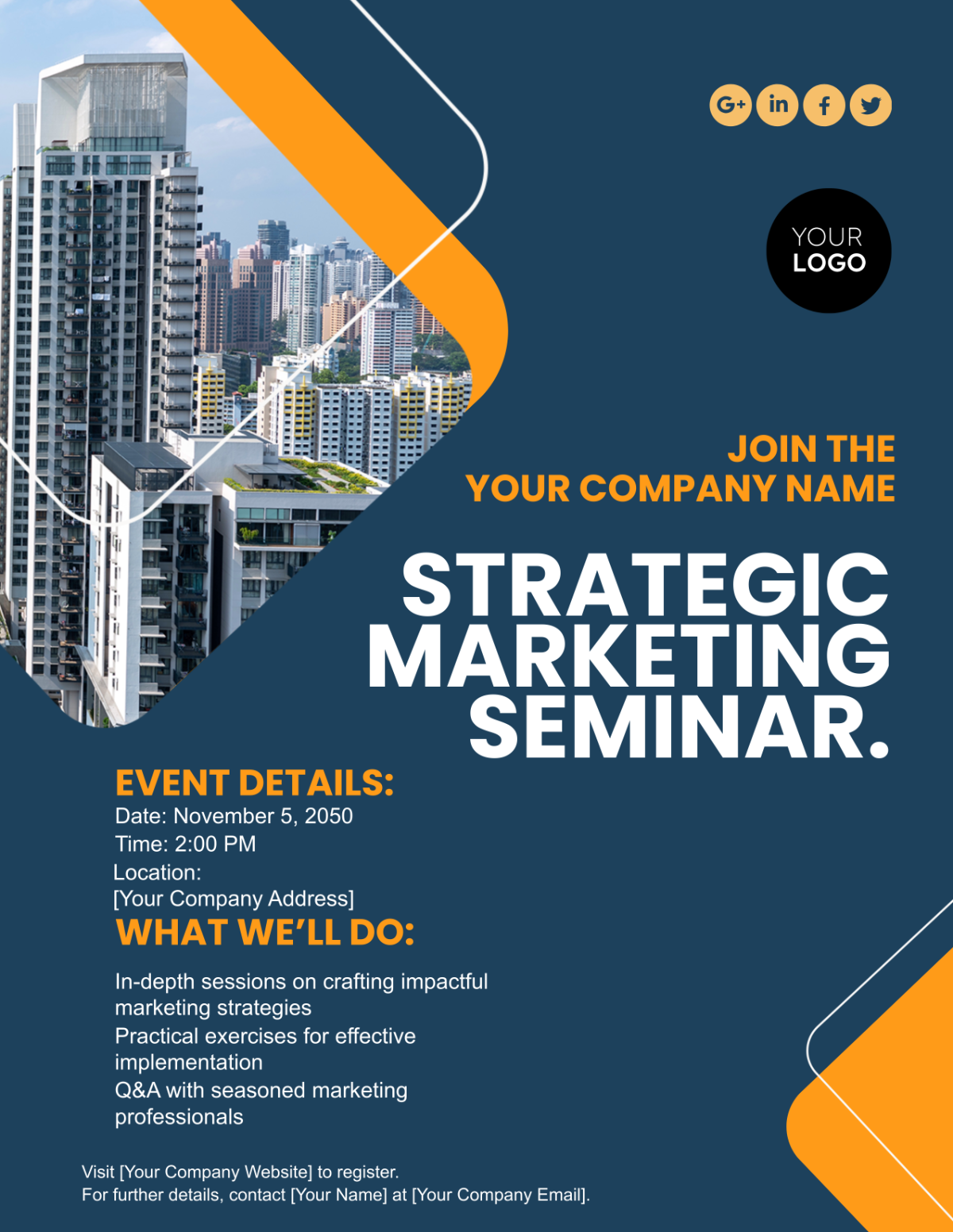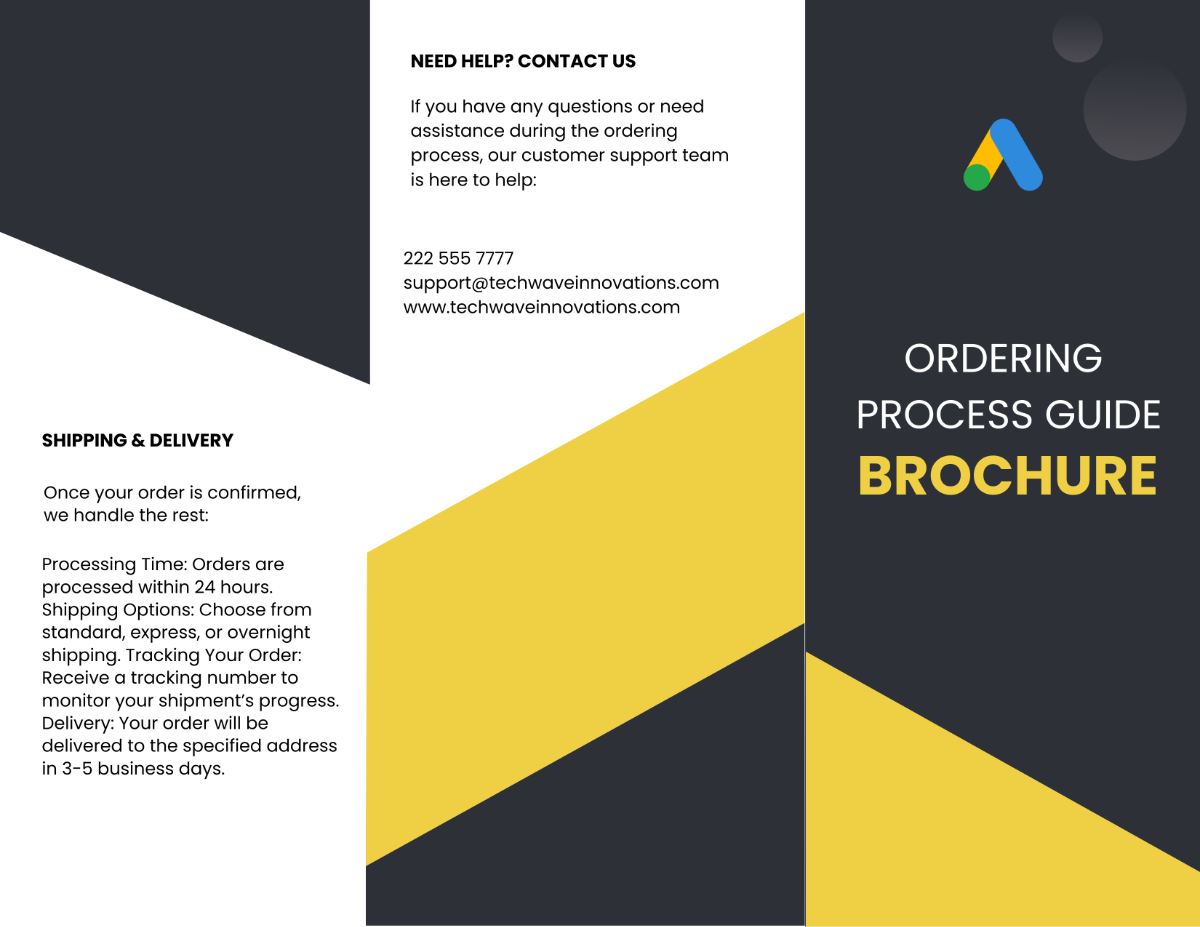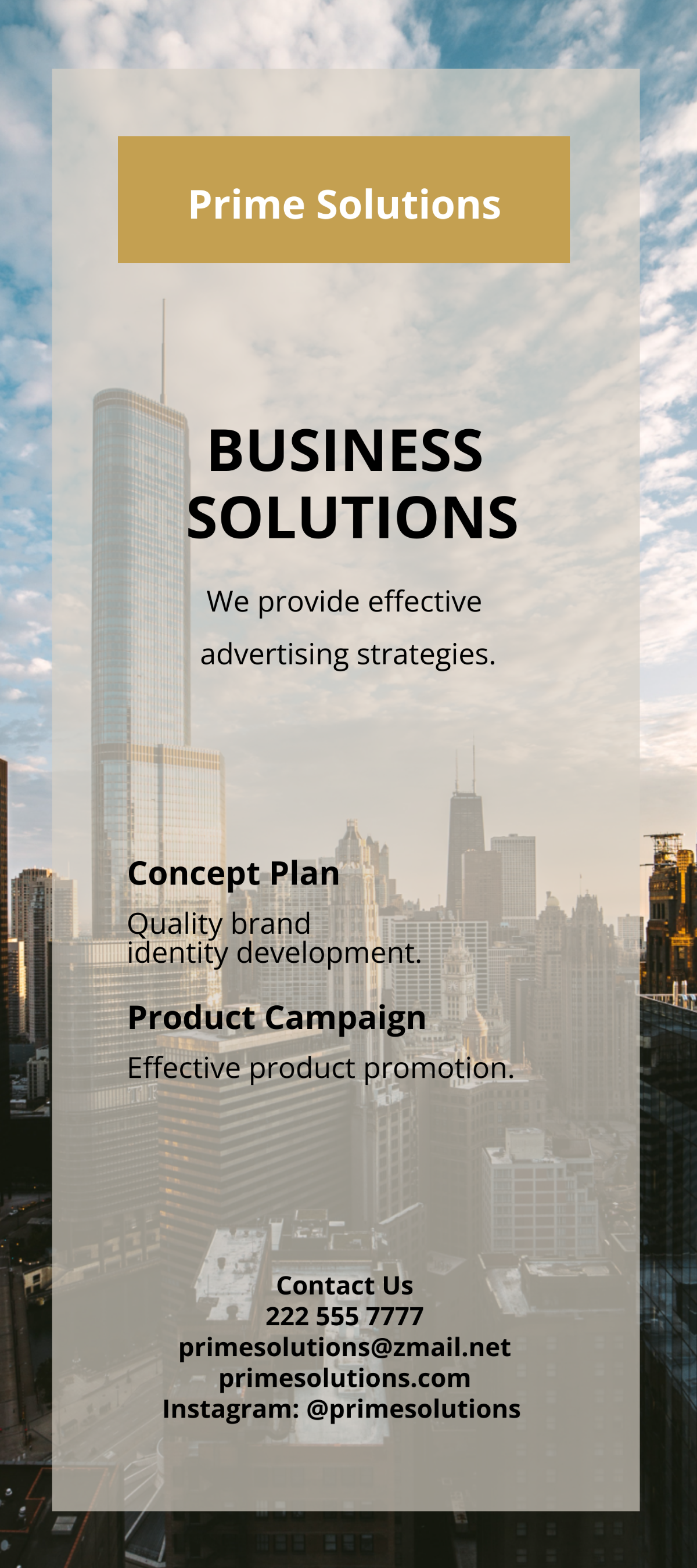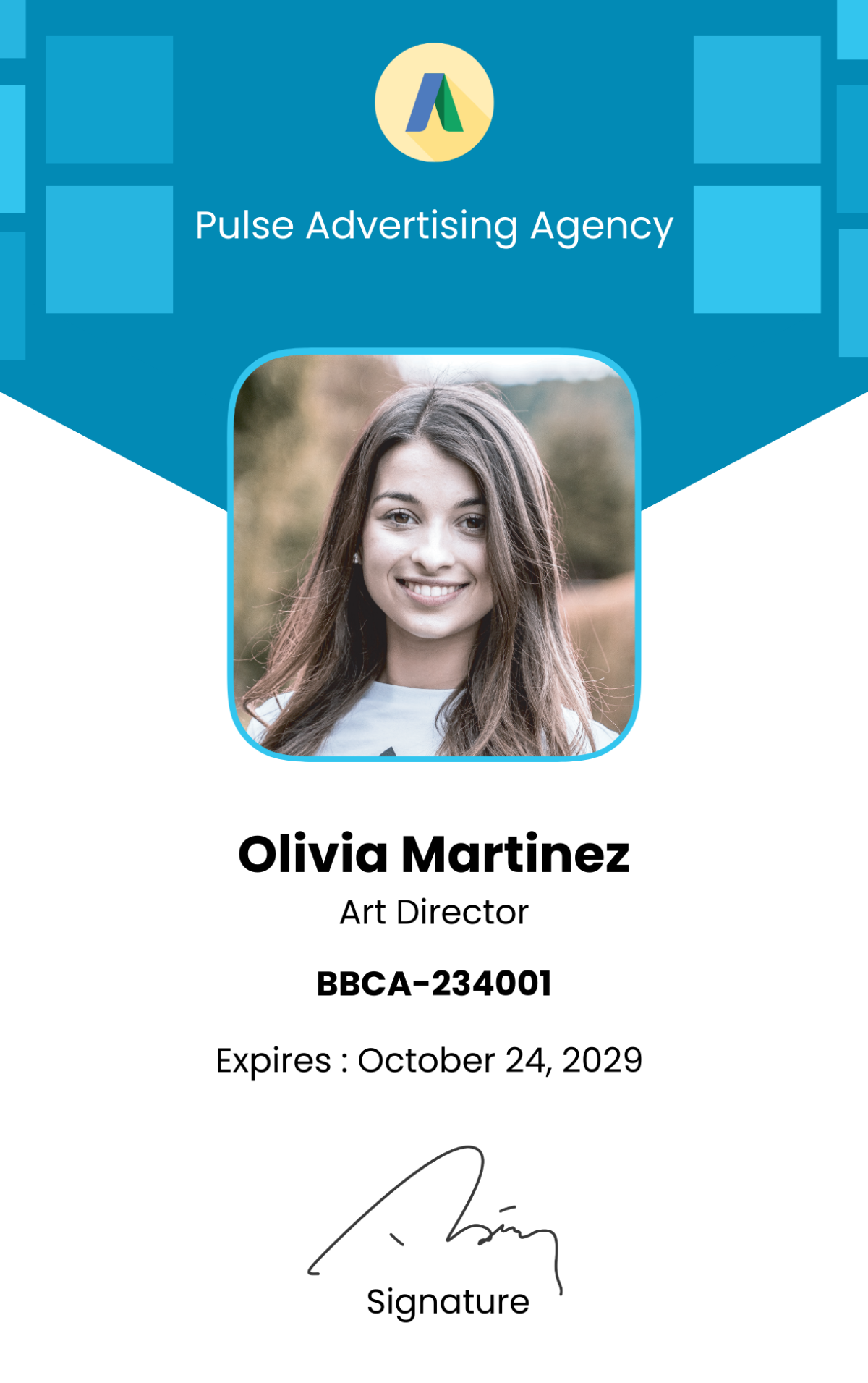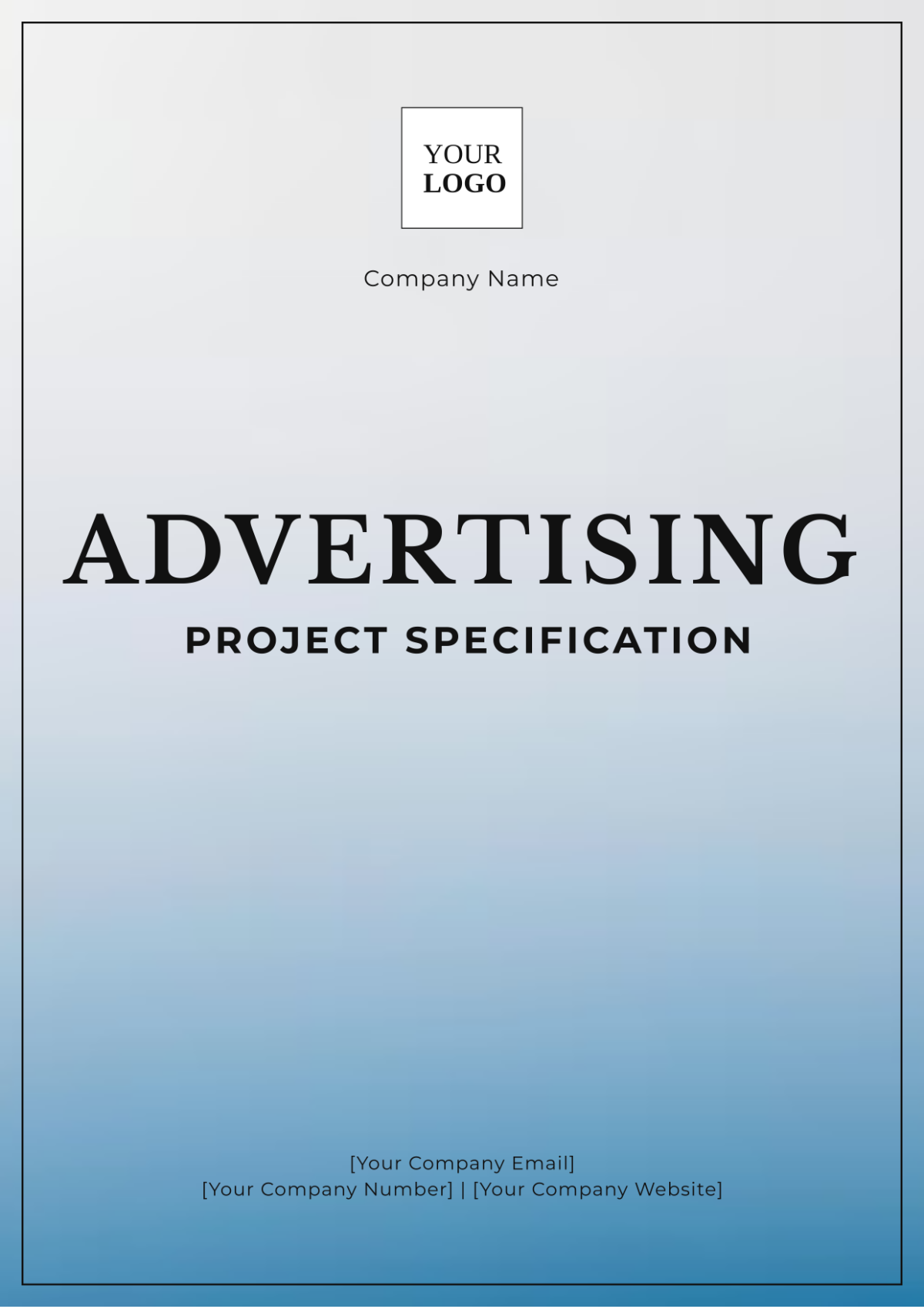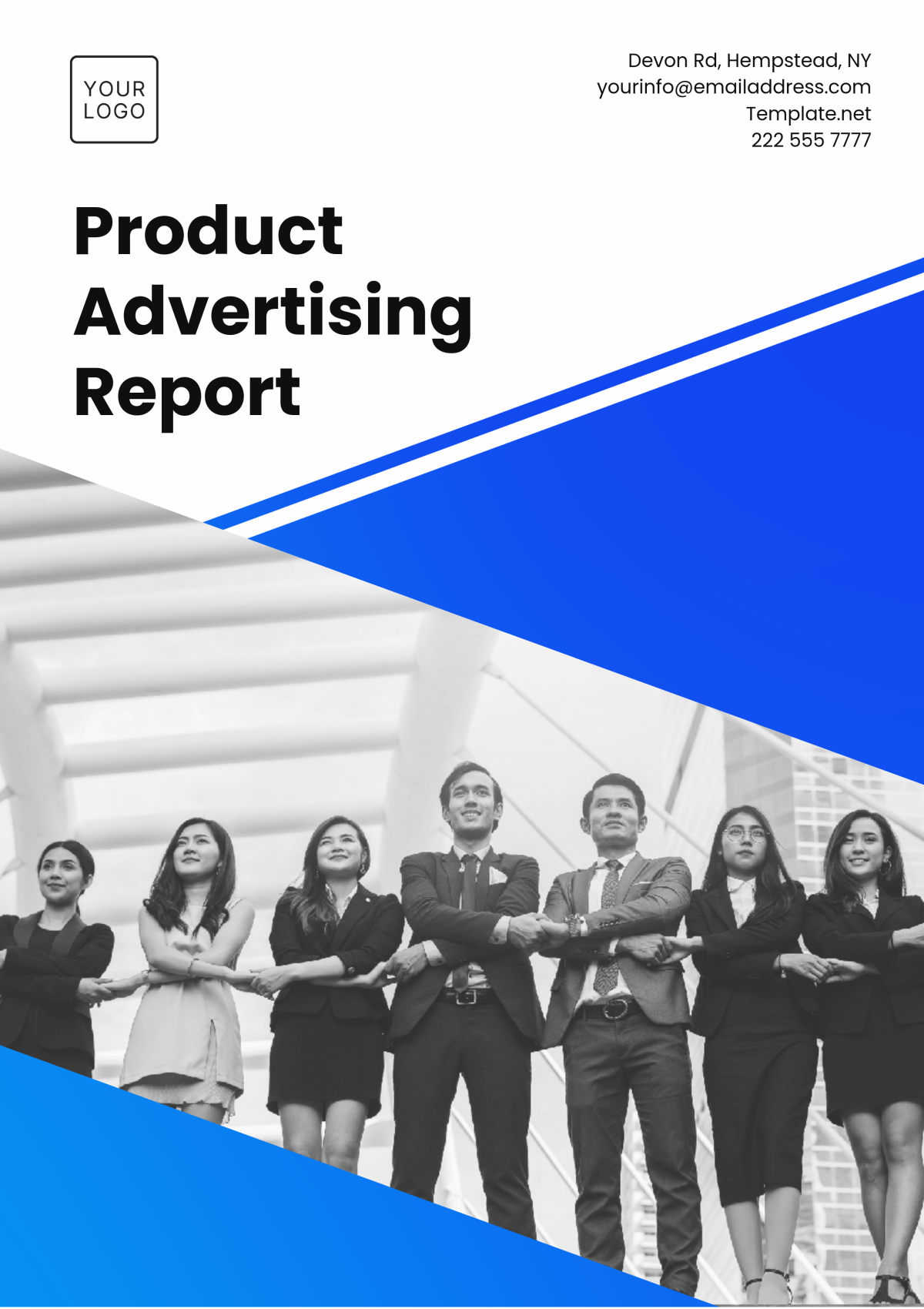Advertising Comprehensive Brief for
Major Campaigns
This comprehensive advertising brief aims to assemble all the necessary information, strategies and goals for a major campaign under the company, [Your Company Name]. This integrated approach will create a compelling narrative that enhances and embodies the brand's unique identity.
I. Introduction
[Your Company Name] stands at the forefront of innovative advertising solutions, offering a unique blend of creativity and efficiency in the dynamic world of marketing. We specialize in creating compelling campaigns that resonate with diverse audiences and drive impactful results for our clients.
Our Philosophy
We believe in a client-centric approach, tailoring our strategies to meet the specific needs and goals of each business we partner with. Our philosophy is grounded in leveraging data-driven insights, emerging technologies, and creative storytelling to build campaigns that not only capture attention but also foster lasting engagement.
II. Major Campaigns Overview
This section provides a deeper insight into the campaigns, elaborating on the specific strategies and success metrics that [Your Company Name] employed to facilitate these campaigns.
A. Digital Transformation Drive
Digital Transformation Drive is designed to empower traditional businesses in their crucial transition to the digital arena, thereby enhancing their online visibility and customer engagement. This initiative is pivotal in modernizing business models and ensuring competitiveness in the digital economy.
Target Market:
The campaign specifically targets small to medium-sized enterprises (SMEs) across a spectrum of sectors such as retail, services, and manufacturing. These industries are often at a pivotal point of digital transformation, seeking to adapt to the evolving consumer behaviors and technological advancements.
Key Strategies:
Comprehensive Social Media Marketing: Customized campaigns across major platforms like Facebook, Instagram, and LinkedIn, employing advanced targeting and analytics to maximize engagement. Implementing algorithms to target audience segments based on demographics, interests, and online behaviors.
Targeted Search Engine Optimization (SEO): Utilizing cutting-edge SEO techniques to enhance online visibility and drive organic traffic, focusing on keyword optimization, quality content creation, and user experience improvements. Adapting content for voice search compatibility, in line with the growing trend of voice-activated searches.
Innovative Mobile Advertising: Leveraging the power of mobile platforms through tailored ads, app-based marketing, and SMS campaigns to reach customers directly on their devices. Utilizing interactive ad formats like video, carousel ads, and augmented reality experiences on mobile platforms.
Personalized Content Creation: Developing unique, engaging content tailored to the specific audience of each SME, enhancing brand identity and customer interaction through blogs, videos, infographics, and interactive web experiences. Encouraging and featuring customer-created content to build community and trust.
Success Metrics:
Metric | Details |
Increase in Digital Traffic | Monitoring website visits, user duration, and interaction rates to gauge the effectiveness of digital presence. |
Higher Search Engine Rankings | Achieving top rankings for key search terms, indicative of improved online visibility and market presence. |
Improved Social Media Engagement Metrics | Tracking likes, shares, comments, and overall engagement rates to measure the impact of social media efforts. |
B. Eco-Friendly Branding Initiative
The Eco-Friendly Branding Initiative is crafted to strategically rebrand and position companies as frontrunners in environmental responsibility and sustainability. This initiative is aimed at transforming the brand identity to reflect a commitment to ecological well-being and sustainable practices.
Target Market:
This campaign is specifically targeted towards environmentally conscious consumers, with a special focus on millennials and Gen Z demographics. These groups are increasingly influenced by a brand's environmental stance and sustainability practices in their purchasing decisions.
Key Strategies:
Green Branding Initiatives: Developing a comprehensive green branding strategy that includes logo redesign, eco-friendly packaging, and sustainability-focused marketing messaging. Publishing regular sustainability reports to demonstrate progress and commitment.
Sustainable Advertising Materials: Utilizing materials and methods in advertising that are environmentally friendly, such as recycled paper, soy-based inks, and digital media channels to reduce carbon footprint. Conducting a lifecycle analysis of all materials used to ensure minimal environmental impact.
Eco-Centric Content Creation: Crafting and disseminating content that highlights the brand's commitment to sustainability, including success stories, sustainable product features, and showcasing partnerships with environmental NGOs and projects in sustainability.
Partnerships with Eco-Friendly Platforms: Collaborating with platforms and influencers that have a strong eco-conscious following, thereby enhancing brand credibility in the sustainability sphere. Sponsoring and participating in environmentally focused events and webinars.
Success Metrics:
Metric | Details |
Brand Recognition as Eco-Friendly | Measuring the shift in brand perception through consumer surveys, social media sentiment analysis, and brand audits. |
Increase in Customer Loyalty | Tracking customer retention and loyalty metrics, particularly among the targeted millennial and Gen Z demographics, to assess the impact of the rebranding. |
Positive Environmental Impact Reporting | Regularly reporting on the company's sustainability initiatives, carbon footprint reduction, and other environmental impact metrics to reinforce the brand's commitment to the environment. |
C. Global Outreach Campaign
The Global Outreach Campaign is designed to assist clients in expanding their market footprint globally. This campaign focuses on tailored, culturally resonant messaging to effectively engage diverse audiences in various regions, thereby facilitating a smooth and impactful market entry.
Target Market:
This campaign targets both emerging and established markets across Asia, Africa, and South America. The focus is on sectors demonstrating high growth potential, such as technology, consumer goods, healthcare, and renewable energy. Special emphasis is placed on understanding and adapting to local market nuances to ensure relevancy and engagement.
Key Strategies:
Multilingual Advertising Content: Development of advertising materials in multiple languages, ensuring that messaging resonates with the local audience's linguistic preferences and cultural nuances. Employing native speakers for authentic and culturally relevant content creation.
Cultural Customization of Marketing Materials: Tailoring marketing campaigns to reflect local cultural values, traditions, and consumer behaviors, which involves thorough research and local expert consultations. Continuously analyzing local trends to stay relevant and effective in messaging.
Engagement Through International Media Channels: Utilizing a mix of traditional and digital media channels popular in the target regions, including local TV stations, radio, social media platforms, and regional online forums. Developing media plans that consider cross-cultural media consumption habits.
Strategic Local Partnerships: Forming alliances with local businesses, influencers, and community leaders to gain insights, enhance credibility, and establish a strong local presence. Engaging in local community projects to build brand trust and recognition.
Success Metrics:
Metric | Details |
Market Penetration in Targeted Regions | Assessing the depth of market penetration through sales data, market share analysis, and customer acquisition rates. |
Brand Recognition in New Markets | Evaluating brand awareness and acceptance in new markets through brand tracking studies, consumer surveys, and social media monitoring. |
Successful Establishment of International Partnerships | Measuring the effectiveness and impact of local partnerships through joint venture success, collaborative project outcomes, and network expansion. |
III. Campaign Data Summary
The following data presents a summary of the key data points associated with each major campaign. The data includes budget allocation, expected reach, projected ROI, as well as additional metrics like engagement rate and customer acquisition cost.
Budget Allocation:
Campaign | Budget |
Digital Transformation Drive | $2,500,000 |
Eco-Friendly Branding Initiative | $1,800,000 |
Global Outreach Campaign | $3,500,000 |
Expected Reach:
Campaign | Target Amount |
Digital Transformation Drive | $40,000,000 |
Eco-Friendly Branding Initiative | $30,000,000 |
Global Outreach Campaign | $60,000,000 |
Projected ROI:
Campaign | Expected ROI |
Digital Transformation Drive | 130% |
Eco-Friendly Branding Initiative | 115% |
Global Outreach Campaign | 160% |
Engagement Rate:
Campaign | Percentage for Engagement |
Digital Transformation Drive | 15% |
Eco-Friendly Branding Initiative | 20% |
Global Outreach Campaign | 18% |
Customer Acquisition Cost:
Campaign | Amount |
Digital Transformation Drive | $30 |
Eco-Friendly Branding Initiative | $25 |
Global Outreach Campaign | $45 |
Analysis:
Digital Transformation Drive:
The increased budget allocation is directed towards integrating a variety of digital channels, including advanced programmatic advertising, AI-driven customer segmentation, and omnichannel marketing strategies. This comprehensive approach is expected to significantly amplify the campaign's reach and ROI.
A key focus is on optimizing the engagement rate, which serves as a primary indicator of the campaign's effectiveness in online customer interactions. The use of sophisticated analytics tools for real-time campaign adjustments ensures a high engagement rate. The moderate customer acquisition cost, achieved through efficient targeting and retargeting strategies, underscores the cost-effectiveness of the campaign.
Eco-Friendly Branding Initiative:
The substantial investment reflects a deep commitment to sustainable marketing practices. The campaign integrates eco-friendly production methods, green public relations, and sustainable event marketing to enhance brand image and consumer appeal.
The higher engagement rate is expected due to the focused approach toward eco-conscious consumers, particularly in digital spaces where these demographics are most active. This includes leveraging social media platforms known for environmental activism and using content marketing that aligns with sustainability themes.
The lower customer acquisition cost is attributed to the strong alignment of the campaign with the values of its target demographics, fostering deeper brand loyalty. The campaign's effectiveness in building a loyal customer base is also enhanced by community engagement strategies and participation in sustainable initiatives, which resonate with the target audience.
Global Outreach Campaign:
The largest budget reflects the campaign's broad scope, targeting a wide array of markets with diverse cultural backgrounds. Significant resources are allocated for market research, localization of marketing materials, and adaptation of campaign strategies to suit various regional preferences and practices.
The expected high reach and ROI are a result of the campaign's extensive coverage and its strategic use of localized content and partnerships. The engagement rate is carefully balanced to reflect the nuanced approach required for different markets, employing culturally sensitive advertising and community-focused initiatives.
The customer acquisition cost is a critical metric, reflecting the balance between the challenges of establishing brand presence in new, varied markets and the potential rewards of successful market penetration. Strategies such as leveraging local influencers, participating in regional trade shows, and establishing local offices or partnerships are key components in managing these costs effectively.
IV. Conclusion
[Your Company Name] is committed to exploring emerging technologies like AI-driven analytics and virtual reality advertising to stay at the forefront of the advertising industry. Our focus remains on delivering measurable results while fostering creative and innovative advertising solutions. This brief encapsulates the essence of the company’s approach, showcasing our commitment to cutting-edge campaigns and data-driven strategies.
This Advertising Comprehensive Brief for Major Campaigns represents a holistic view of the campaign strategy, reinforced by an integrated approach to enhance and embody a the brand's unique identity.
